Looking to buy a quality Japanese shogi board but unsure where to look or how to choose? This article will cover important points to consider when choosing a board as well as recommend some high-quality shogi boards made here in Japan by reputable companies and craftsmen.
What Determines the Price of a Shogi Board?
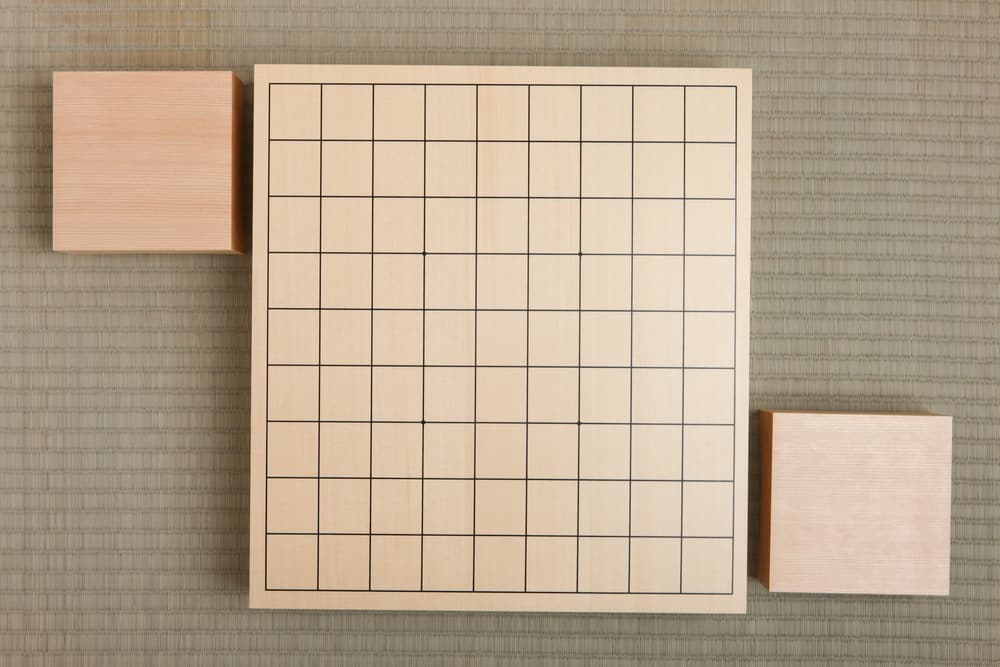
1. The Materials Used
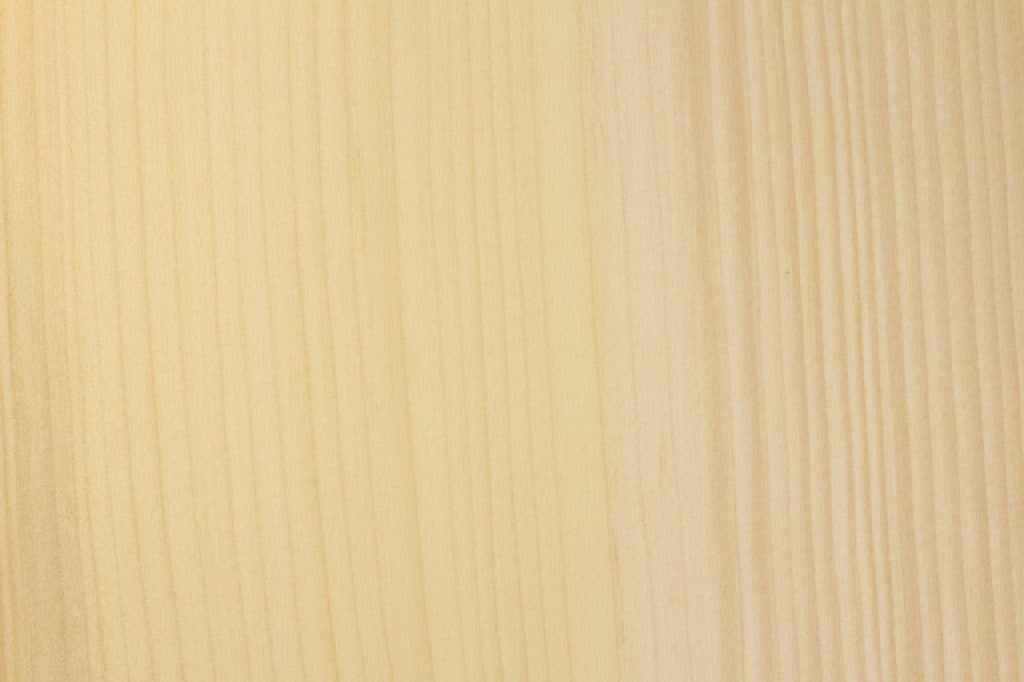
One of the most important factors that determine the price of a shogi board is the type of wood it is made out of (or plastic, in the case of a cheap set). Various types of wood are used, but some are considered to be more desirable than others. The wood most commonly agreed to be the best is "kaya" or Japanese nutmeg tree, as it produces a lovely snapping sound when a piece is placed on it and has a beautiful wood grain and color that is said only to improve with age. Other commonly-used woods are native Japanese katsura and hiba tree woods, as well as imported spruce from North America.
2. The Wood Grain

Another factor that determines the value of wooden shogi boards is the "kidori," or cut of wood used. Depending on the size of the tree from which the wood is cut and the section used (closer to the center of the trunk vs. closer to the edge of the trunk), the wood grain pattern that appears on the board varies. The more consistent and evenly-grained cuts are more highly valued, while those with cross grains and irregular grain patterns are less valued. In the graphic above, the "shiho-masa" cut is the most prized, followed by tenichi-masa, ten-masa, and oi-masa cuts.
3. The Thickness
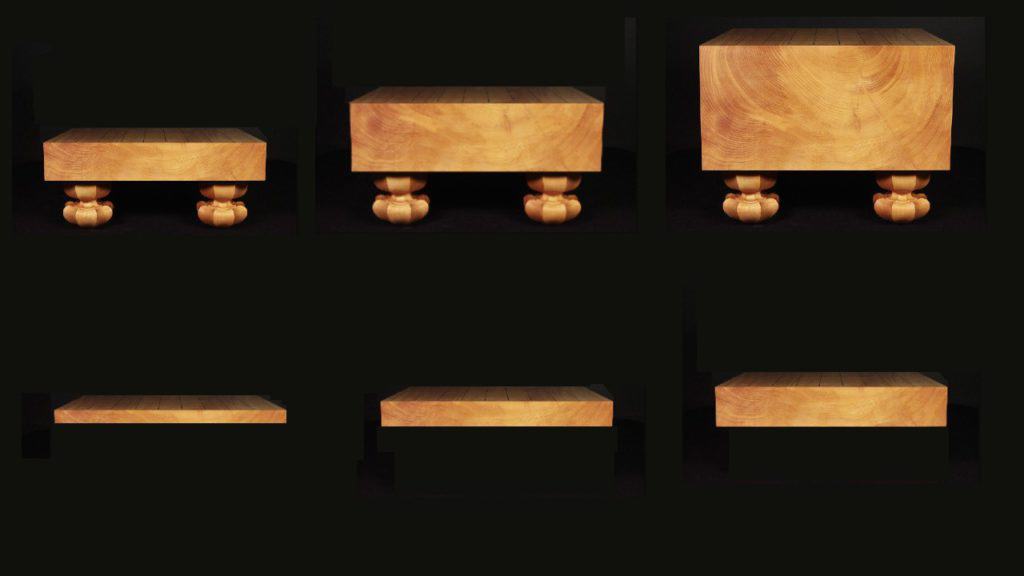
Shogi boards come in a range of thicknesses, with thicker boards fetching a higher price, as would be expected. The most important professional games are played on the thickest shogi boards, which are usually about 24 cm thick.
4. Solid or Component board
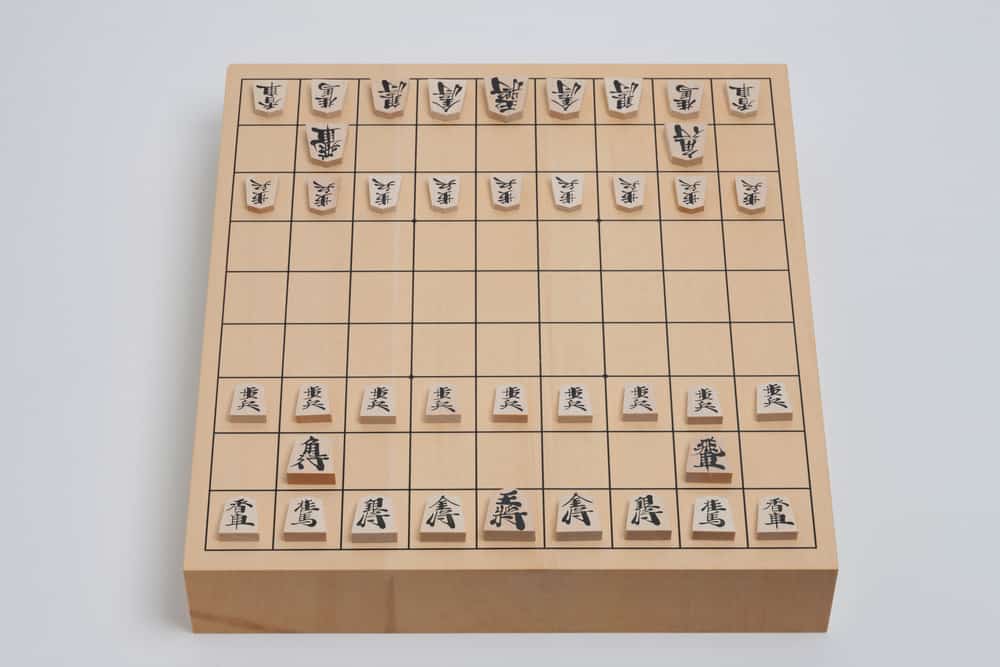
Shogi boards are usually made from a single piece of wood, called "ichimai ita," or from two or more pieces of wood that are joined together, called "hagiban." As the latter can be made from smaller pieces of wood and are therefore less scarce, they sell for a lower price than the rarer "ichimai ita" boards, making them an attractive option for those who want a high-end board made from top-quality wood but who can't afford an ichimai ita.
5. Defects
The last thing that affects the price of a shogi board is the presence of defects in the wood. These can be natural defects such as knots, discoloration, or cracks, or (more rarely) they can be defects incurred during the crafting or handling processes such as scratches or nicks. Generally, the fewer defects present, the more expensive a board will be.
How Much Should I Spend on a Shogi Board?

Shogi boards run anywhere from just a couple thousand yen for a cheap plastic or plywood board up to several hundred thousand yen for masterpieces cut from a single block of exquisite, rare wood. How much you want to spend is up to you, but for a high-quality board made by a Japanese craftsman who specializes solely in making shogi and go boards, expect to pay at least 10,000 yen for a 3 cm thick composite board. If you want something a bit thicker or a board that is made from a single piece of wood, expect to pay closer to 40,000 or 50,000 yen for a quality piece.
Styles of Shogi Boards
Shogi boards come in a variety of styles and sizes. Here is an overview of the most common types.
Shogi Boards With Legs (脚付将棋盤)
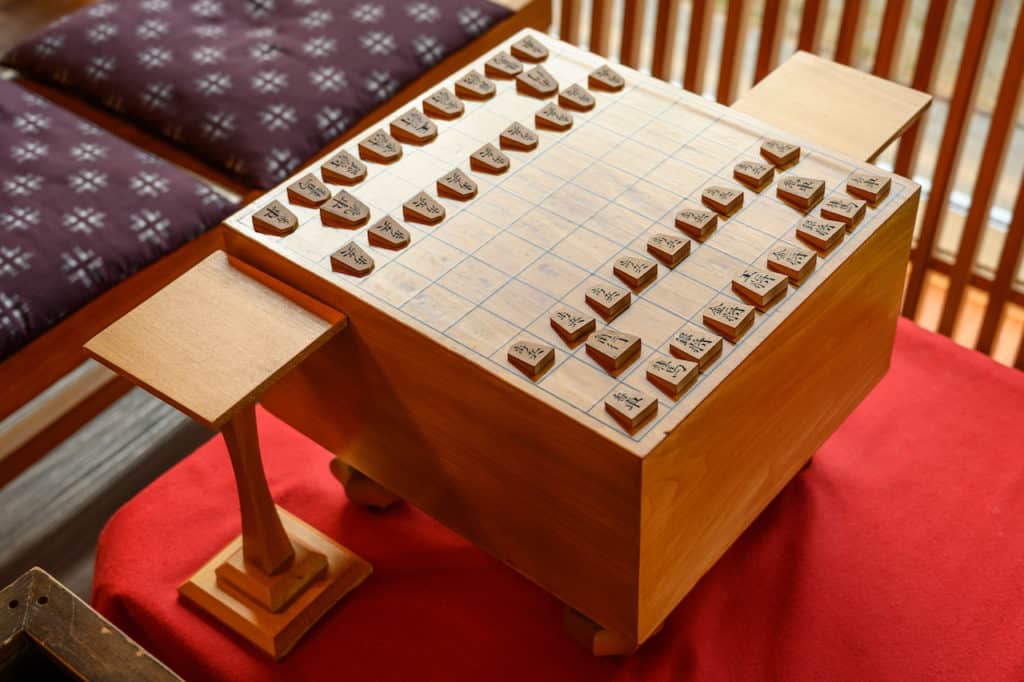
When thinking about a traditional Japanese shogi board, the image that likely comes to many people's minds is of the thick table-like shogi boards with attached legs. These boards come in a variety of thicknesses, from about 12 cm up to about 21 cm, and are typically carved from a single block of wood.
Traditionally, these boards are combined with a pair of cushioned armrests and two separate small "komadai" tables to place the captured pieces on. Although very cool, these shogi boards are quite heavy, take up a lot of space, and are expensive, making them uncommon to find in a casual shogi-player's house.
Tabletop Shogi Boards (卓上将棋盤)
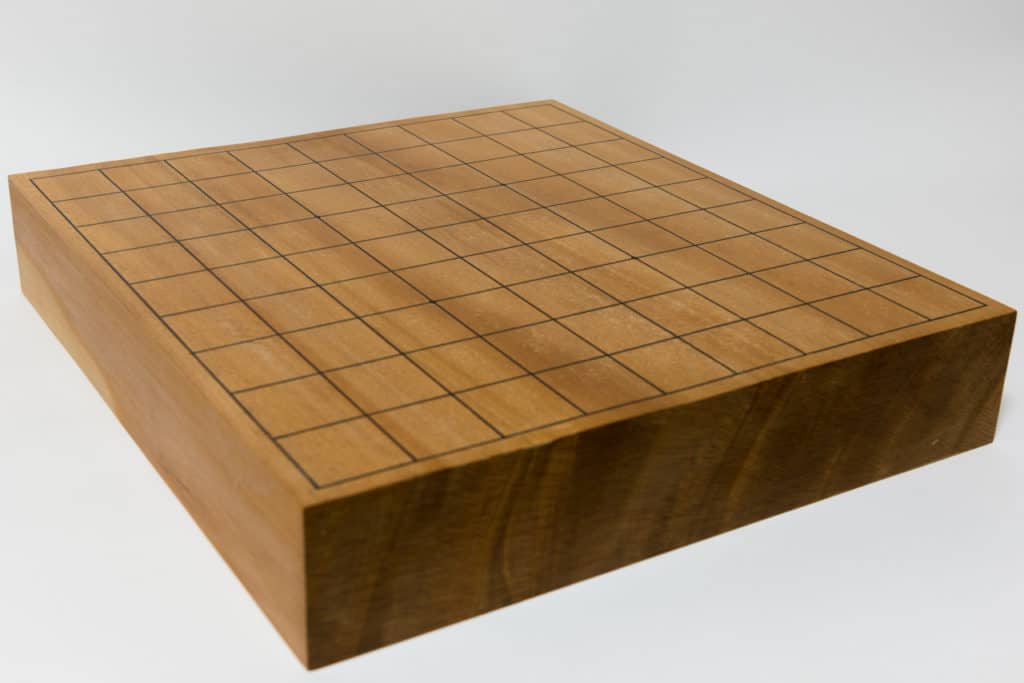
The most common type of shogi board used is the tabletop shogi board. These sit on top of a regular table and are often used in combination with small, square tabletop "komadai" for placing captured pieces. These boards, too, come in a range of thickness, from just a few millimeters thick, up to nearly as thick as a small legged shogi board.
Bargain Shogi Boards
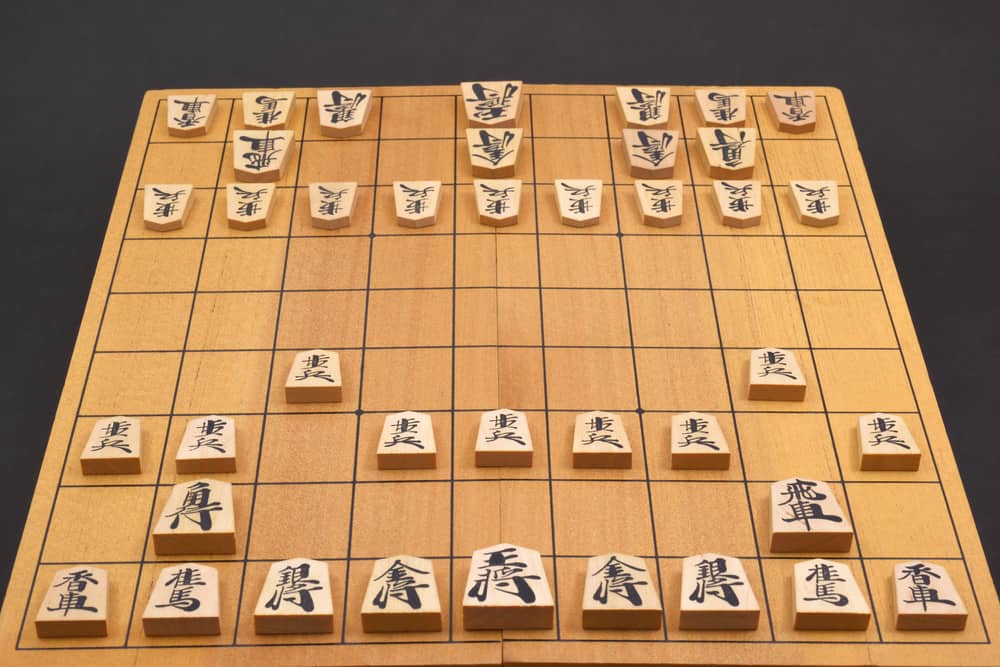
For those looking just to get a cheap board to play on and who aren't concerned with the quality or longevity of the set, there are many bargain-priced shogi boards for sale on the internet. However, these bargain boards typically feature low-quality wood and are often made outside of Japan. Although the very inexpensive price tag on these boards can be quite appealing, "you get what you pay for" is definitely the case with these items.
Portable Shogi Boards

Another type of board that many shogi players will keep as a second board is a portable shogi board. These are typically smaller in size than a standard board and commonly feature a hinge or can be taken apart to make them more compact. Others, such as the portable board introduced below, are made from fabric, meaning they can be folded or rolled up, as well as being very lightweight.
What About the Shogi Pieces?
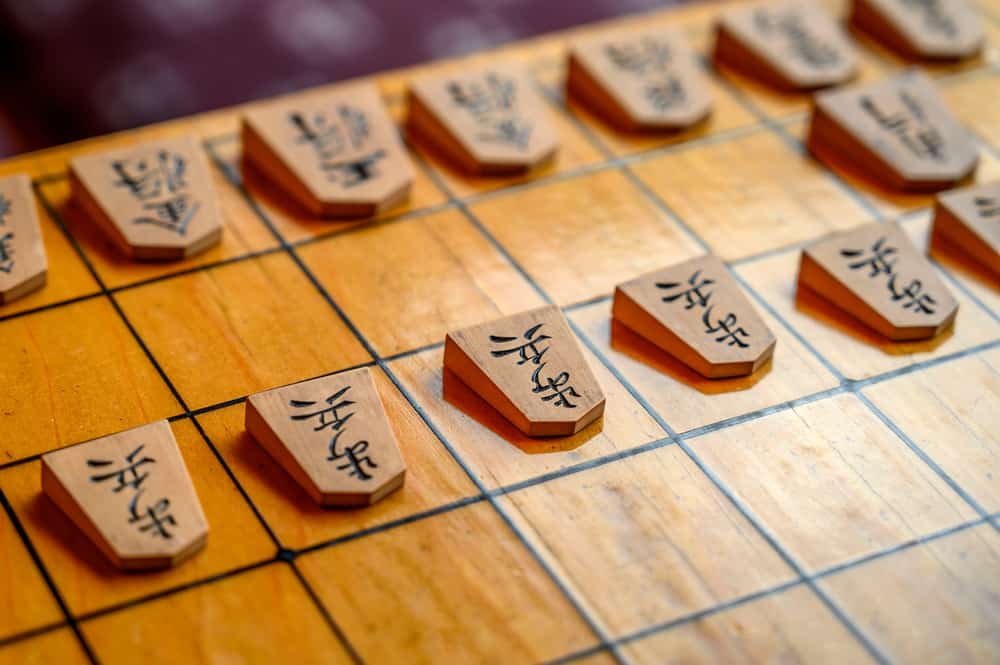
If buying a shogi board for the first time, chances are that you will need to purchase a set of pieces, as well. Although shogi pieces are sometimes sold as a set along with a shogi board, most high-end shogi pieces are sold separately. Indeed, the shogi pieces are the most personal aspect of a shogi set, so most shogi players take the most care when choosing and customizing their set of pieces.
Features to Keep In Mind When Choosing a Set of Shogi Pieces
Type of Wood Used
Just as with shogi boards, shogi pieces also are made with a variety of wood (or plastic, for bargain sets). The highest-quality sets of shogi pieces are made from "kaya" (Japanese nutmeg tree), "tsuge" (Japanese box tree), birch, maple, or other hardwood.
Font
Each shogi piece has "kanji" character(s) written on both sides. However, the font or calligraphic style used can vary greatly from set to set, with some featuring a single character on each piece (technically an abbreviation of the full name of the piece) and others featuring an intricate calligraphic design that can be difficult to read at first glance. Choose whichever font you like the best.
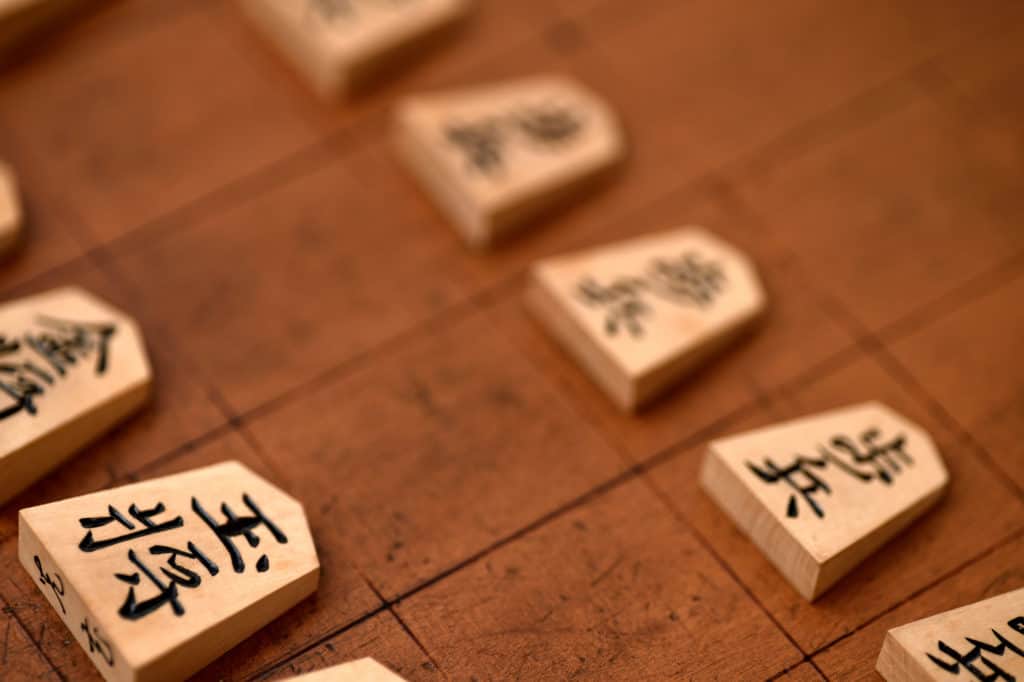
Engraving Method
In addition to the font, the way that the characters are written on the pieces can also vary. The main styles are "kaki-goma," where the characters are simply written or printed on the surface of the piece; "kezuri-goma," where the characters are carved into the face of the pieces and painted with lacquer; "kezuriume-goma," where the characters are carved into the face of the pieces and filled with lacquer until smooth with the surface of the pieces; and "moriage-goma," where the characters are carved into the face of the pieces and filled with lacquer to make it stick out from the surface of the piece.
Maker
Another feature of high-end sets of shogi pieces is the name of the craftsman who made them, written on the back edge of the gyoku and ou (king) pieces. Each maker has a unique style, and this signature is a sign of a quality set.
Where Can I Buy a Shogi Board?
Unless you can directly visit a shogi board workshop to select your board in person, the best place to buy a shogi board is online. Some workshops have their own websites and can sell directly, while others use partner sites such as BECOS to sell their products overseas. If all you are after is a cheap board to start playing on and you care less about the craftsmanship and artistic touch that goes into the creation of a shogi board, EC sites such as Amazon should have what you're looking for.
If you're reading this article, though, the chances are that you are looking for a real, quality Japanese piece that is made in the traditional way and will last for generations. If that's the case, see below for our recommended shogi boards.
5 Recommend Shogi Boards Made in Japan
Best Legged Shogi Board
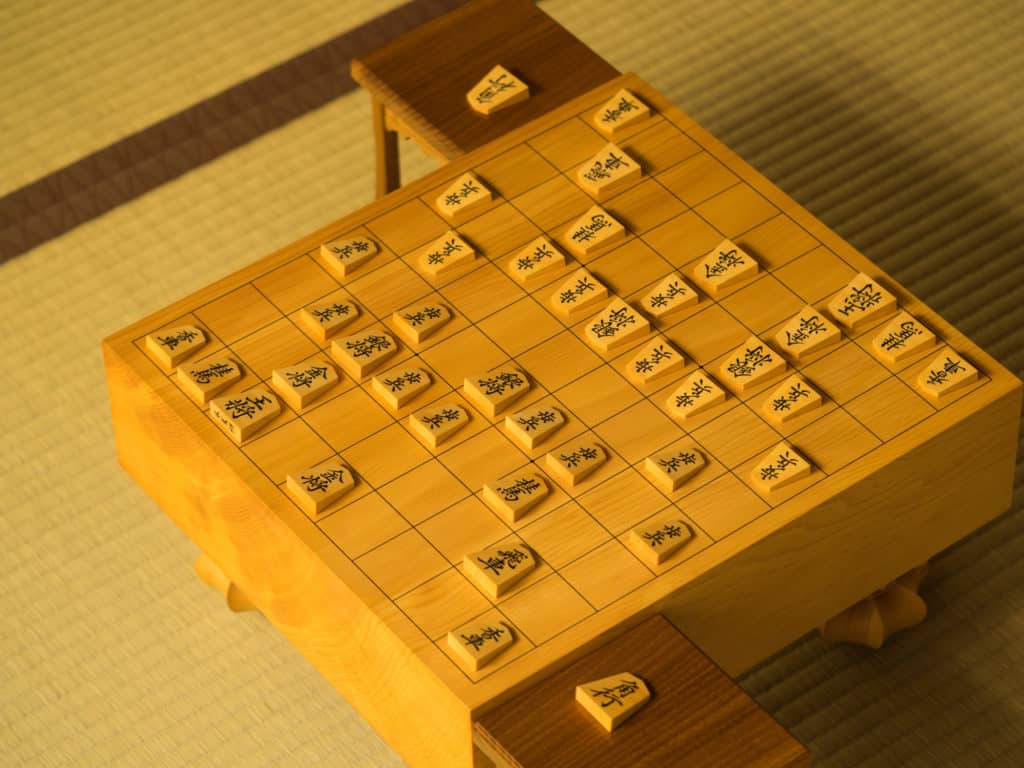
If you want an exquisite shogi board with legs that uses the finest wood available for making shogi boards, this is it. This beautiful board is made from a variety of kaya called "Hyuga kaya" which is from Kyushu and is becoming exceedingly rare in modern times. The board is a full-sized 9 cm thick and has a beautiful color that is a signature of Hyuga kaya wood.
Best Tabletop Shogi Board (Single Piece)
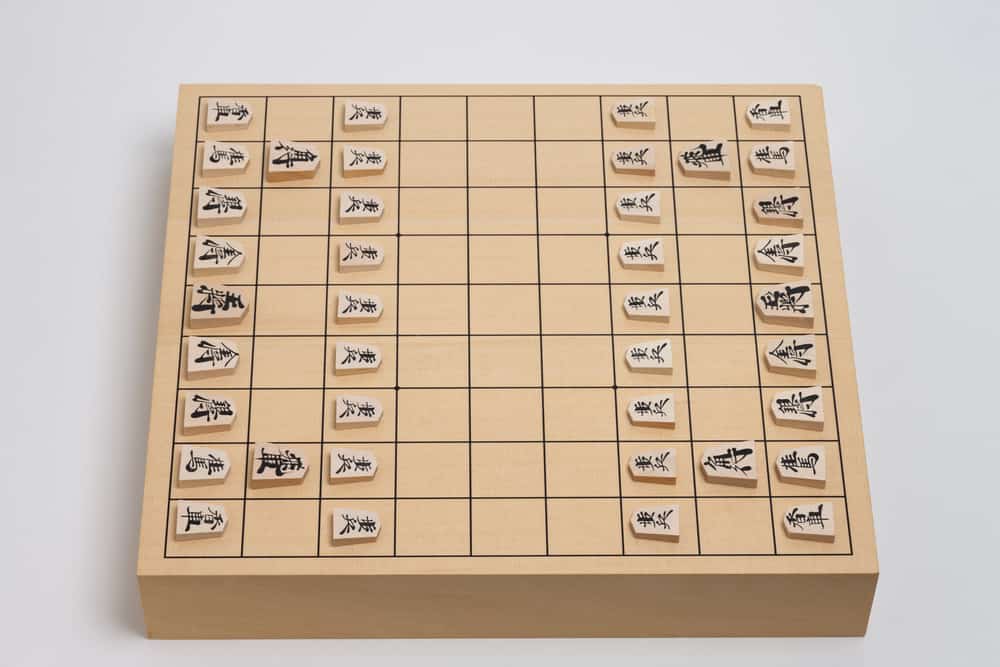
This beautiful board is carved from a single piece of spruce (called "shin kaya" in Japanese when referring to shogi boards) and is a full 9 cm thick. Although the wood is imported from North America and not as valuable as kaya wood, the board is still a beautiful work of Japanese craftsmanship. The wood grain is even and the light color of the wood is very attractive making this a great choice for someone looking for a tabletop board made from a single block of wood ("ichimai ita").
Best Tabletop Shogi Board (Composite Board)

This lovely composite board is 3 cm thick and made from pieces of kaya, considered the best wood for shogi boards. As it is thinner than the board above and made from multiple pieces of wood, the price is much more affordable while the quality remains excellent.
Best Portable Shogi Board

Hands down the coolest portable shogi board available are these unique cloth "furoshiki" shogi board sets, produced by professional shogi player Akiko Nakakura. Her concept for the sets was to provide affordable yet high-quality shogi sets for children to learn and develop a love for the game. The "furoshiki" cloths are hand-dyed in Kyoto in a traditional process, and feature a perfectly-sized shogi board that can also be tied into a pouch to hold the box of included shogi pieces. The quality wooden pieces are made in Yamagata Prefecture, the prefecture that produces the most shogi pieces in all of Japan. As a bonus, the set also comes with a hand-painted folding fan (an item often used by pros during their games) and a beginner's book on how to play shogi.
Best Bargain Shogi Board
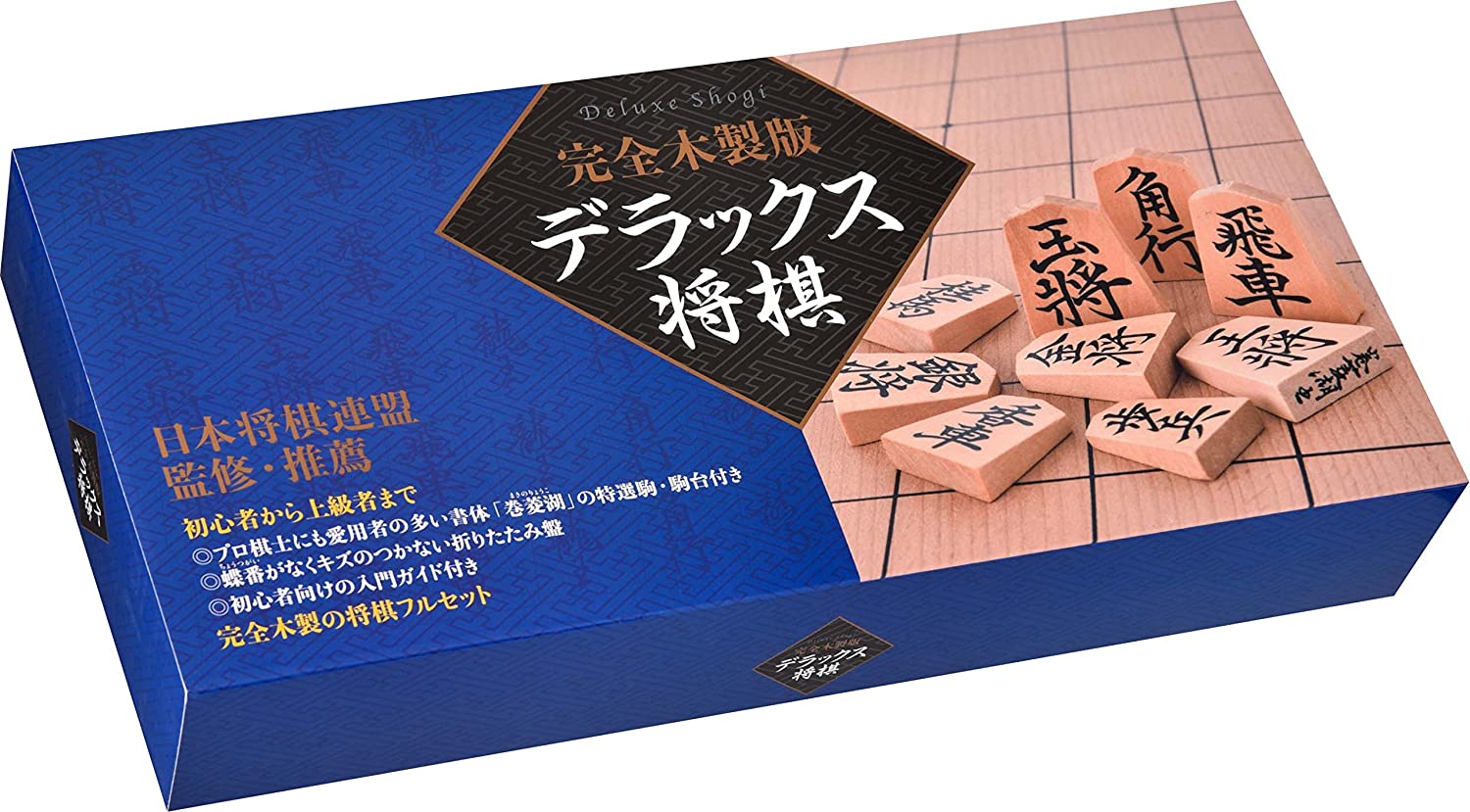
If you're just after something cheap that will work fine for playing the game, this Shogi board, available on Amazon, is very affordable and comes with a set of pieces as well. Everything is wooden, although the quality is much cheaper than anything else introduced above, which is to be expected of any board in this price range. With that being said, if a basic, functioning set is all you need, this will certainly get the job done.
Related article: ▶ The Complete Guide to Traditional Japanese Crafts
If you want to give feedback on any of our articles, you have an idea that you'd really like to see come to life, or you just have a question on Japan, hit us up on our Facebook, Twitter, or Instagram!
*These products may not be able to be shipped to certain countries. Please see the retailer's website for more information.
The information in this article is accurate at the time of publication.


